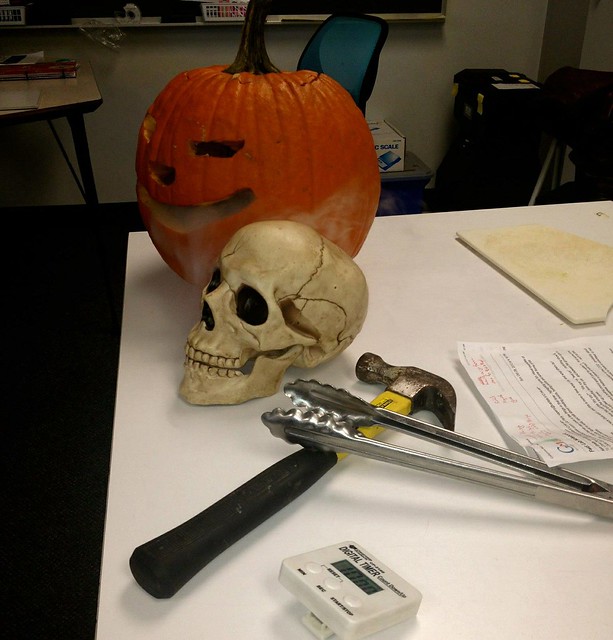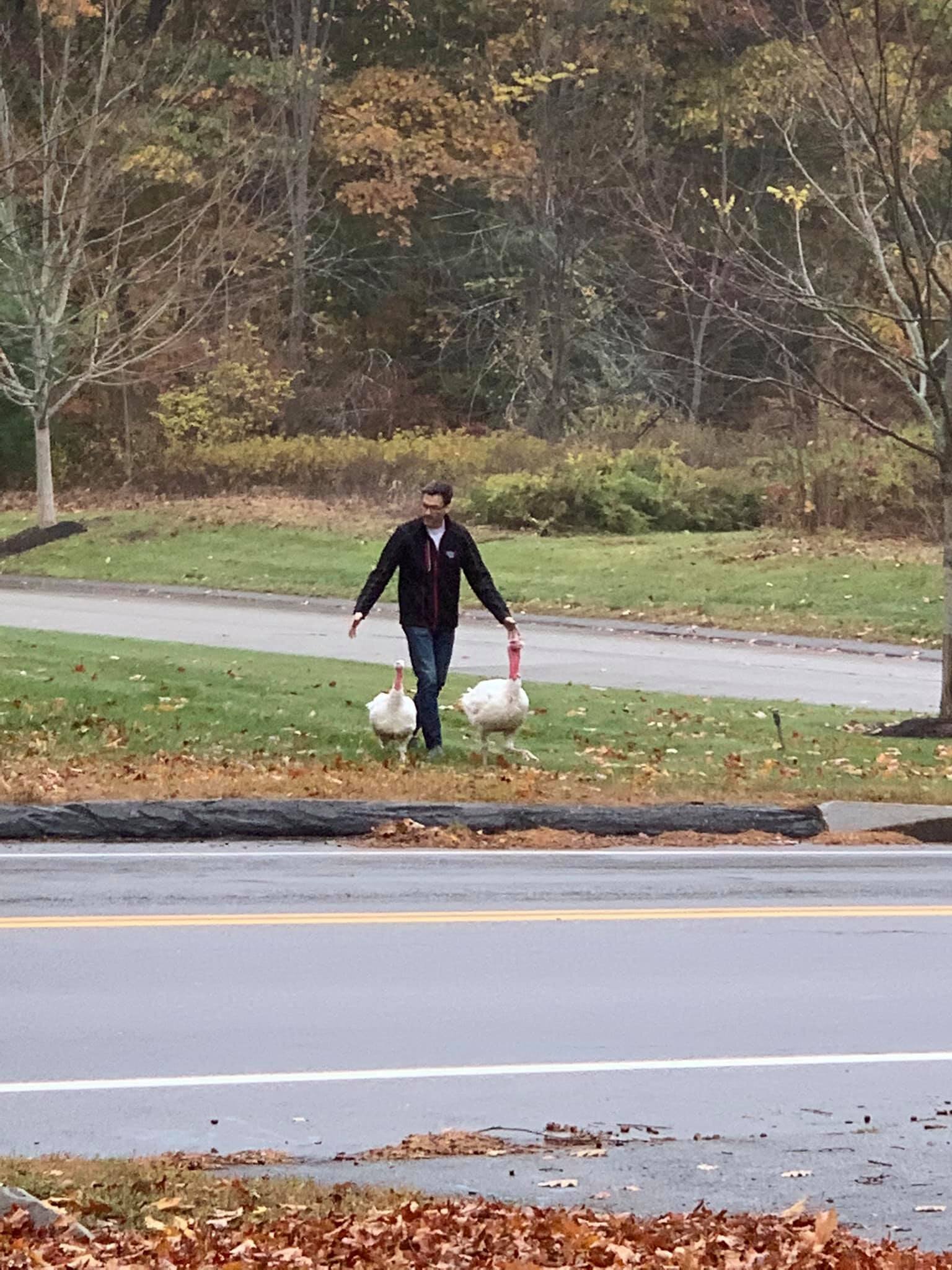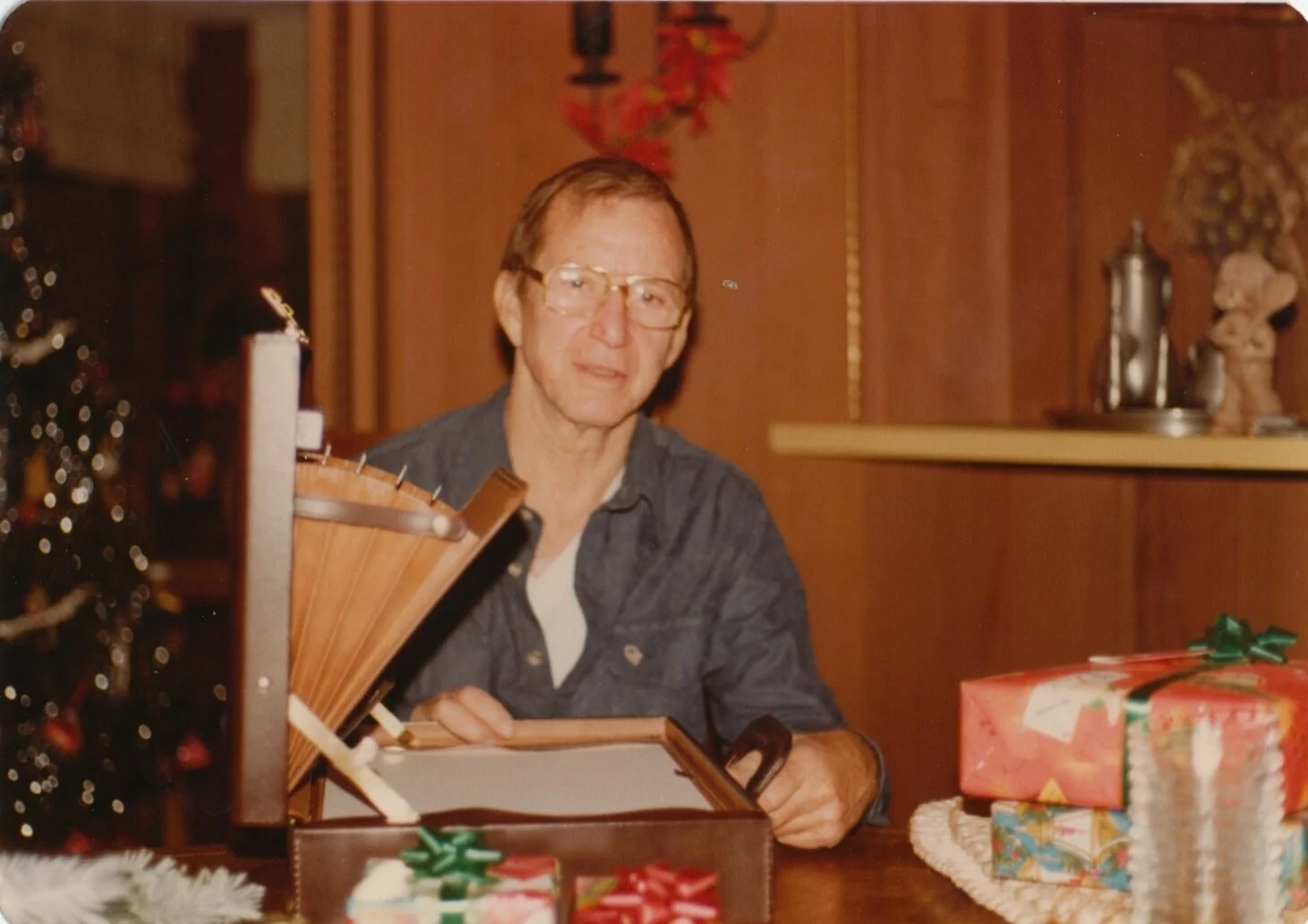Halloween scare: guest teach 85 fifth graders for a day
/A few weeks ago, my Bride was looking over the Critter's homework as she worked at the kitchen counter. It was science. She was intrigued. The class had done an experiment comparing different types of rock - shaking them in sealed containers, seeing which broke down into smaller bits more quickly, which stayed whole, etc.
My Bride is a scientist by training (cellular biologist) who spent many years in research and development and helped set up scale-up manufacturing facilties for new drug manufacture. She comes by her list-making tendencies and detailed attention pretty honestly. She was intrigued by the classroom experiement.
"How did you document the procedure?"
"Did the same person shake each rock?"
"How do you know you used the same amount of force?"
"What was your control?"
"Did you repeat the protocol & use the average of the results to ensure you didn't have anomaly?"
"Did you measure the precipitate as gross output? Or as a percentage of the original?"
"Here. Let me show you how we did it in the virology lab..."
At which point she dove into a neatly organized box I didn't realize we had in the basement, and pulled out one of her lab notebooks. ("Oh good... that's where we keep the virus research. Remind me never to go into the basement again.")
This led to some conversation with the Critter's teachers, and an ensuing invitation to come in and teach a science class. Which somehow involved me. And then my Bride realized she'd only be available for half the day anyway, so maybe I should be the interface with the teachers? Are you ok with that? Ok, that's settled then.
Yes. Er. Wait. What was that?
4 classes of 5th graders. What the heck do you teach them? Well, it's around Halloween, so how about spooky stuff? What stuff do I have that's spooky, visual, and science-related. I know.. Dry ice!

I explained to the kids that I like science because it involves props. And if you don't see a hammer on the table, the scientist is probably some kind of fraud.
Hey, you ask me to volunteer, I get to fill the kids heads with whatever stories I choose. It's a fair trade.
Since I live with a 5th grader, I know they can be a fairly intimidating bunch when they're in packs. So I came up with a layout of a lesson plan that hit a little on "what scientists do" and covered some of the basics of states of matter, and how we make practical use of that knowledge. For those who might be considering a guest spot in a nearby 5th grade class, I offer it up below.
- 5 minutes or so on who the heck we are: My Bride & I both explained what science we do & work with on a daily basis
- 5-10 minutes or so on Ice, Dry Ice - freezing points & melting points of things we know. (I used Water, Chocolate & Steel as examples) "Why do you think they call this 'dry' ice?" - "dry ice" vs. "wet ice" - including show & tell with some of each. It's totally safe for the kids to touch the smoke/fog from dry ice - and between the grown ups in the room, we were able to let each "group" touch and feel up close - including some demos of pouring the fog over a kids head, and watching him/her get all "spookified."
- What's the white stuff? If this is carbon dioxide (which we breathe out), why can't we see our breaths? When can we see our breaths? Is this the same thing?
- A few minutes on sublimation vs. melting. And some time to create a hypothesis about which will happen faster - will dry ice disappear before a piece of wet ice? We set up the experiment, and determined the initial mass of each piece, and then monitored it at various times throughout the class. We recorded up front how many votes were for "regular" ice melting faster, and how many for the dry ice melting faster.
- Another experiment - dry ice soap bubbles (like this one) - a fun and visual way to see the expansion of the CO2 as it sublimated into gas - probably about 10 minutes. This included some volunteers from the class to give it a try as well, and get a little hands on.
- Check in our our dry ice vs. wet ice melting - which is proceeding faster? Record our results
- Super cooling - using dry ice and alcohol to freeze tomatoes, lettuce, flowers - and give it a smash! See how you can shatter a tomato? (this is when the hammer comes in.) I told all the kids to go home and ask their parents about a comedian named Gallagher. Then we put a rubber ball into the super-cool bath to see what would happen - it's not cold enough to make the rubber brittle (we'd need something like liquid nitrogen for that), but it does suck most of the 'bounce' out of the ball.
- Check in on our dry ice vs. wet ice melting again. Record results. See who wanted to change their votes Almost all the kids voted for "regular" ice melting faster in the beginning. This part was good reinforcement of how our theories and hypothesis are tested by our observations.
- A few more minutes on when we use these principles of "cold, really cold, and super cold" beyond special effects - making ice cream, in medical treatment, long term storage, testing materials for space, etc. Usually by now, my voice was going, and I'd pop a bit of dry ice in a plastic container with some water, and casually drink it. This woke the kids up in the back.
- A final check on our experiment, and a wrap up on whose hypothesis was right.
We had another experiment in mind - making 'hot ice' from sodium acetate, but couldn't quite get it to work in the practice runs (easiest way to melt the stuff is in a microwave, which we don't have at home). My Bride saved the day with the super-cooling idea above. As it gave us more opportunity to use the hammer (I also had it along to break up the big blocks of dry ice), it was in.

The kids all seemed to be pretty engaged. Dry ice is visual enough and uncommon enough to be cool, especially to this age. The volunteer segments all went well - one girl who was brought up to shatter a tomato gave it a whack hard enough to shatter the corian cutting board we had brought along for the demo as well. That sent me into a fit of laughter so hard I had difficulty getting back on track. I think she was famous for the rest of the day; kids coming in for classes after lunch were asking me about it.
When things didn't go right (which happens a lot in science), I would shout something about what shocking things the classroom blanding turtles were doing to get the kids to look away for a minute, and help the volunteer get the experiment back on track. The kids were hilarious, and asked great, clever questions, and we had a blast spending time with them.
We did all of our experiments up at the front table. As you can see, I was wearing gloves and had a pair of tongs for handling the dry ice. It's cold enough to burn skin if not treated with a little care, and I didn't want to get banned from the school and have to fill out what I assumed to be all kinds of paperwork.
Chemistry was never my favorite topic - I only made it through the coursework in college because I had a lab partner willing to do all the fiddly stuff, and a really cute TA that I'd spend the rest of the time talking to.
I'm looking forward to volunteering again in the spring segment on Engineering, when we really hit my wheelhouse. I've already suggested a day on the soccer field with a few home made physics engines.
Here kids.. let me introduce you to my friend: le trebuchet.






